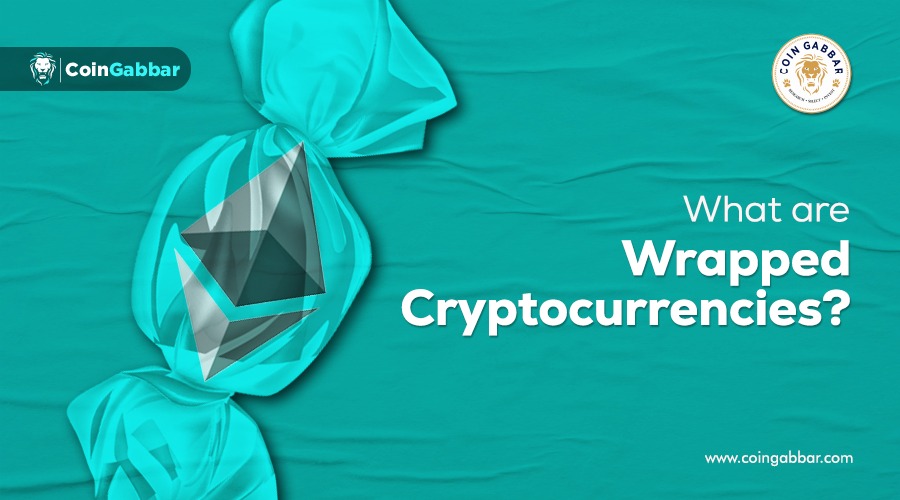
A solution is needed for blockchain ecosystems that differ in terms of scalability, security, programmability, and privacy. This is where wrapped cryptocurrency comes into play. Trading bitcoin on the Ethereum blockchain is now possible because of the concept of wrapped cryptocurrencies.
A wrapped cryptocurrency is a token pegged to the value of another crypto or asset. The original item is placed in a wrapper, a type of digital vault that permits the wrapped version to be generated on another blockchain. Wrapped tokens are non-native assets that can be utilized on another blockchain. It establishes connectivity across networks and achieves cryptocurrency interoperability.
Simply put, a wrapped token is a token that symbolizes another blockchain’s standard cryptocurrency and is valued the same as the original coin. Unlike the original cryptocurrency, wrapped tokens can be utilized on non-native blockchains and afterward redeemed for the original coin.
Wrapped crypto tokens, such as wrapped bitcoin (wBTC), are smart contracts on a different blockchain that represent locked collateral of the original asset (i.e., BTC). They are used to give liquidity to the rapidly expanding DeFi ecosystem.
But wBTC should not be regarded as the fundamental equivalent of BTC. Many people lose money in liquidation crises because of this popular misconception. In bear markets, the perceived value of wrapped tokens might fall faster than the original ones. Wrapped tokens can lose their peg even though their balance is still 1:1.
By definition, stablecoins are coins whose value is pegged to the value of a fiat currency. As mentioned earlier, the value of wrapped tokens is pegged to the value of another token. So, this implies that all wrapped tokens fall under the category of stablecoins.
However, stablecoins such as USDT can not be classified as wrapped tokens since their value is pegged to the US dollar in off-chain currency reserves. These reserves, unlike wrapped tokens, are not verified using an automated system.
Wrapped tokens are created and removed by processes known as "minting" and "burning." To create a wrapped token like wBTC, the underlying asset, in this case, BTC, is delivered to a custodian, who maintains it in a digital vault. Once the underlying BTC is secured, an equivalent quantity of wBTC can be created.
This procedure is also known as "wrapping." A smart contract is used to "wrap up" the underlying asset in a digital vault, and a newly wrapped asset is created for use on another blockchain.
The identical procedure is used to burn wBTC but in reverse. The WBTC is removed from circulation, and the corresponding amount of BTC is freed from the digital vault and returned to the market.
Because of this minting and burning, or wrapping and unwrapping, all wrapped tokens, from wBTC to wETH (a wrapped version of Ethereum), are backed by an identical quantity of their underlying currency. For every 100 WETH created, 100 ETH are held in reserve to support the value of the wrapped token.
Even while several blockchains have their own token standards (for example, Ethereum's ERC-20 or BSC's BEP-20), these standards cannot be utilized across other chains. Wrapped tokens enable the usage of non-native tokens on a specific network.
Wrapped tokens can also improve liquidity and capital efficiency for both controlled and decentralized exchanges. The ability to wrap idle assets and employ them on another chain can help to link previously separated liquidity.
Finally, transaction times and costs are significant advantages. While Bitcoin has some wonderful qualities, it is not the fastest and can be costly to use at times. While it is good for what it is, it can occasionally create headaches. These concerns can be overcome by adopting a blockchain-enabled wrapper version with quicker transaction speeds and reduced costs.
Wrapped tokens, such as WBTC, provide interoperability between blockchains, allowing users to effortlessly transfer assets and use services (DApps) on other blockchains. These benefits might include quicker transaction times, cheaper costs, or yield farming potential.
While the number of wrapped cryptocurrencies in circulation has constantly increased, bridges—a technology that allows you to wrap your own tokens in order to exchange them across blockchains—have flourished.
There are several disadvantages to consider while interacting with these tokens. While interacting, you need to trust a third party for the custody of these assets. On the one hand, this ensures their reliability; on the other hand, regulatory pressure may change the intended service or even censor transactions.
Other wrapped tokens may function in the absence of a centralized custodian. A smart contract effectively takes its place. Although decentralized, smart contracts are not without any risk since they are not fully resistant to faults and flaws.
One issue is that, as more blockchains are produced, the number of bridges required to ensure that assets on one blockchain may easily transfer to another grows rapidly.
Solutions are being created to make linking assets between blockchains easier and more efficient.
Although wrapped tokens claim to lower costs, the fact is that this is not guaranteed. Wrapping bitcoin with Ethereum would incur substantial minting costs, and transactions would be subject to Ethereum fees, which are not necessarily cheaper than bitcoin rates.
As a result, switching chains frequently to cut transaction costs does not appear to be a practical alternative. Nonetheless, a wrapped version of a coin is not that coin; it is a whole other cryptocurrency. The majority of their inherent functions are lost.
However, wrapped tokens and bridges are expected to be important features of the interoperability solution in the future. As they provide more liquidity, quicker transactions with low fees, and DApps interoperability too. This improves the compatibility of the crypto and Decentralized Finance (DeFi) ecosystems. Wrapped tokens enable a world in which finance is more efficient and apps can readily share liquidity.

Mona Porwal is an experienced crypto writer with two years in blockchain and digital currencies. She simplifies complex topics, making crypto easy for everyone to understand. Whether it’s Bitcoin, altcoins, NFTs, or DeFi, Mona explains the latest trends in a clear and concise way. She stays updated on market news, price movements, and emerging developments to provide valuable insights. Her articles help both beginners and experienced investors navigate the ever-evolving crypto space. Mona strongly believes in blockchain’s future and its impact on global finance.
7 months ago
Ethereum news

7 months ago
Central bank digital currency news

7 months ago
Blockchain updates

7 months ago
Cryptocurrency tax news

7 months ago
Crypto news today

7 months ago
NFT news

7 months ago
Latest cryptocurrency news

8 months ago
News on crypto exchanges

8 months ago
Bitcoin price predictions

2 years ago
i traded with KARENTOMPSOM on 🅸🅽STAG♈am because she understands every beginners intentions and fixes you to a trading course that matches your capacity. her techniques are unique
